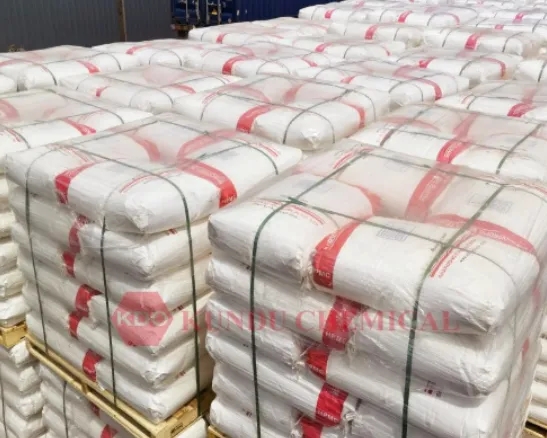- Time:2024/7/23Posted:SHANDONG KUNDU CHEMICAL CO.,LTD.
Cellulose, the primary component of plant cell walls, is the most abundant organic polymer on Earth. Its derivatives find extensive use across various industries, including food, pharmaceuticals, and construction. Among these derivatives, hydroxypropyl methylcellulose (HPMC) and methylcellulose (MC) are the most popular. While HPMC and MC are often used interchangeably, they have significant differences that should be taken into account.
What is Hydroxypropyl Methylcellulose?
Hydroxypropyl methylcellulose (HPMC) is a nonionic, water-soluble cellulose ether derived from the natural polymer cellulose. Its molecular structure closely resembles that of natural cellulose, making it suitable for a wide range of industrial applications. HPMC's unique properties, such as solubility and viscosity, make it ideal for use in building materials, food, pharmaceuticals, and cosmetics.
Features of HPMC:
1. Solubility: One of the most significant advantages of HPMC is its solubility. HPMC readily dissolves in cold water, forming a clear, highly stable, viscous solution. This property makes HPMC an ideal adhesive for various industries, including construction and pharmaceuticals.
2. Viscosity: HPMC has high viscosity, making it ideal for thickening liquids. This high viscosity is primarily due to its hydroxypropyl and methoxy functional groups, which enhance its ability to form hydrogen bonds and interact with water molecules.
3. Film Formation: HPMC is an excellent film-forming agent and is commonly used in the pharmaceutical industry for coating tablets and capsules. This coating creates a barrier against moisture and other environmental factors, potentially extending the drug's shelf life.
4. High Purity: HPMC is of high purity and is a natural product that does not contain any harmful chemicals. This makes it ideal for use in the food and cosmetic industries.

What is Methylcellulose?
Methylcellulose is a cellulose ether derived from cellulose fibers and is the methyl ester of cellulose. Its molecular structure differs significantly from that of natural cellulose, making it less susceptible to enzyme degradation. Methylcellulose is a versatile compound used in various industries, including food, pharmaceuticals, construction, and cosmetics.
Characteristics of Methylcellulose:
1. Water Solubility: Methylcellulose dissolves readily in cold water, forming a clear, viscous, and highly stable solution. However, its solubility is lower than that of HPMC, making it less suitable for industries that require high solubility, such as construction.
2. Viscosity: Methylcellulose has high viscosity, making it ideal for thickening liquids. This viscosity is due to its methyl functional groups, which interact with water molecules.
3. Film Formation: Methylcellulose is an excellent film-forming agent and is commonly used in the pharmaceutical industry for coating tablets and capsules. However, its film-forming performance is slightly inferior to that of HPMC.
4. High Purity: Methylcellulose is highly pure and is a natural product free of harmful chemicals, making it ideal for use in the food and cosmetic industries.
Comparison between HPMC and MC:
1. Solubility: HPMC is more soluble in water than methylcellulose. This difference in solubility makes HPMC a more viable option for industries that require high solubility, such as construction.
2. Viscosity: Both HPMC and methylcellulose have high viscosities. However, HPMC has a slightly higher viscosity than methylcellulose, making it more suitable for industries that require higher viscosities, such as food and cosmetics.
3. Film Formation: Both HPMC and methylcellulose are excellent film-forming agents. However, HPMC has slightly better film-forming properties, making it more suitable for use in the pharmaceutical industry.
4. Purity: Both HPMC and methylcellulose are high-purity natural products that do not contain any harmful chemicals.
Hydroxypropyl methylcellulose and methylcellulose are both important cellulose derivatives used in various industries. Both compounds have high solubility, high viscosity, excellent film-forming properties and high purity. However, the solubility and viscosity of HPMC are slightly higher than those of methylcellulose, making it more suitable for industries requiring high solubility and viscosity. Additionally, HPMC has slightly better film-forming properties than methylcellulose, making it more suitable for the pharmaceutical industry. However, both compounds have unique properties that make them well-suited for different industries, and their use should be determined based on the specific application.





